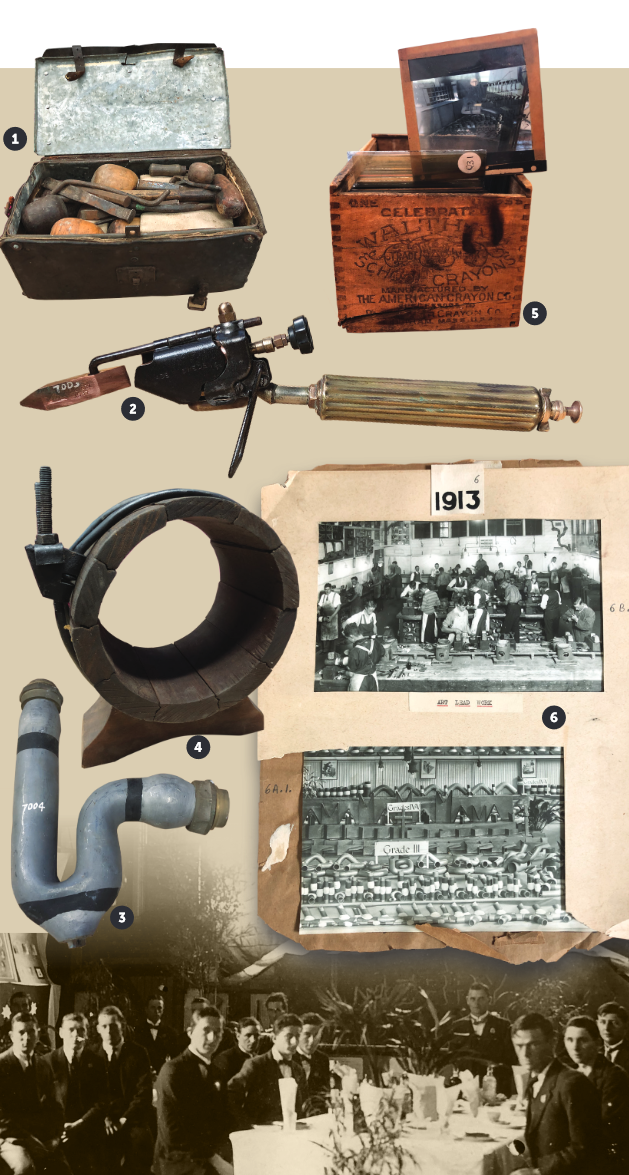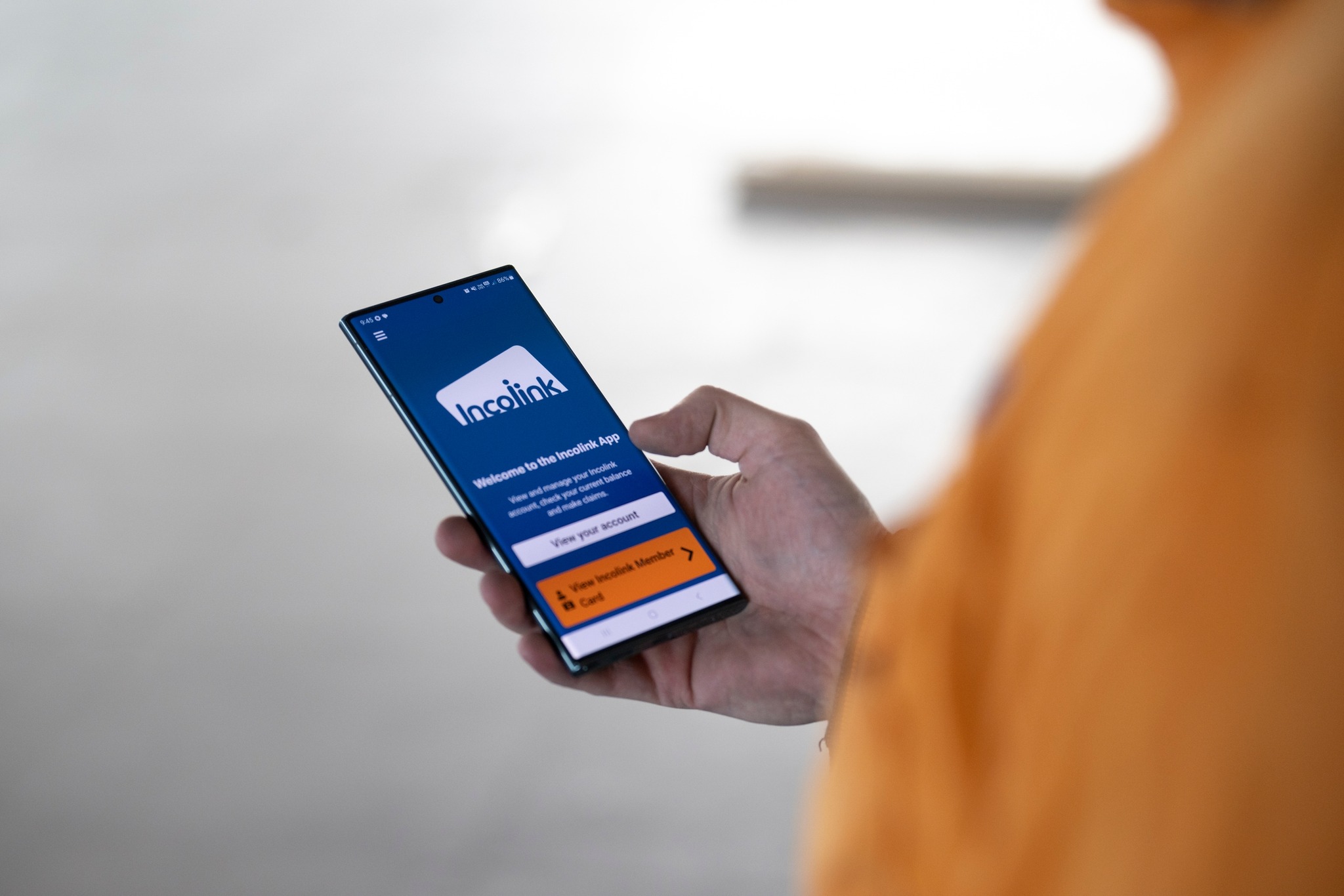A section within the Master Plumbers Tool & Artefacts Collection, the Charles Wright Collection, was rescued from a skip bin, by one of the trainers at the Swinburne Technical College, originally the Eastern Suburbs Technical College (ESTC). Curator, Peter Jenson explains.

- Leather tool bag and contents
- Sievert (restored) Kero soldering iron
- Lead waste trap
- Wooden Stave Water Main
- Glass Slides
- Students 1913 at work with some of their lead models
Bottom Pic – Returned soldier’s Christmas dinner 1919S
Swinburne may not have been a member of the Master Plumbers Association, but there were strong connections between the organisations in the early 1900s, including:
- The first trainer C.H. Wright had been an association member.
- Many apprentices went on to be association members and serve on committees.
- Master Plumbers created awards for plumbing apprentices at the college.
- Some association members went on to be assistant trainers at the college.
On a personal note, I found the 1911 attendance records for 1st year apprentices, which included George M Worboys, the founder of Worboys Plumbing, where I worked for 48 years from 1970.
For those interested in the history of the ESTC, the foundation stone was laid by the State Premier, Thomas Bent, on 19 September 1908 with training starting in early 1909. Trades included, Carpentry and Joinery, Metal Work including Turning & Fitting, Blacksmithing, Plumbing and Gas fitting. Much of the original collection had been lost to a skip bin in 1978-1979 when Swinburne began its march to become a university, with the need to evict the traditional trades from the site including the plumbing department.
The Swinburne Plumbing was moved too and amalgamated with Holmesglen Institute.
If it was not for one of the trainers at that time, John McBride (long-time friend of the association) who saved what has been left, this important part of plumbing history would have been lost.
The Artefacts saved for this section, No 7, include the following pieces:
- A leather tool bag and its contents. (From the plumbing maintenance department of St Paul’s Cathedral Melbourne (Swanson & Flinders St Corner) 7001 & 7002.
- Blow Torch/Soldering Iron. (Donated by McIlwraith’s plumbing supplies) 7003.
- Lead Trap. 7004.
- Wood Stave Water Main section. (Wannonwater - Warrnambool water supply, Circa 1893) 7005.
- A Large Green Scrap Book (item 7006) with the red spline and black ties appears to be the plumbing departments collection of items from its formation (Circa 1908-32) as collected by Charles Wright.
- A smaller Green Scrap Book with a collection of small handbooks put out by the Metropolitan Gas Company based in Flinders St Melbourne. 7006.2.
- A summary of the Charles Wright collection, noted by John McBride. 7007.
- Glass Slide collection of some 54 slides, showing various training settings, on site work situations, model displays, buildings, design drawings and a social function. 7008.
John later went to the regulatory sector for plumbing and finally with the Plumbing Industry Commission.
The biggest single change in that time was the relocation of plumbing regulation from the Health Department from 1988 to 1997 to the Plumbers Gas-fitters and Drainers Registration Board, then briefly (1997-98) the Plumbing Industry Board then again a change in 1999 to the Plumbing Industry Commission.
This new Plumbing Industry Commission inherited several features that set it apart from all previous Boards. No longer under the jurisdiction of the Health Department, it would be totally self-funded, managed by the industry, and would by its newly found independence have a far more effective power base, with both state and federal authorities and other industry bodies in the plumbing and building trades.
It would register drainers for the first time, and it would license Gas-fitters, who had been regulated by private gas companies since 1877.
Based partly on international best practice for regulatory systems that were researched by Michael Kefford, John McBride, Ray Herbert, and with the support of John Rutherford, a new regulatory model was launched.
The new licensing arrangements lifted and protected industry standards with its inbuilt system of critical self-certification, compulsory insurance, and accountability for work completed. This all overseen by uniform state-wide audits. This, driven by the transfer of on-site plumbing regulation from water authorities to the Plumbing Industry Commission. In addition, the definition of plumbing work in regulation expanded substantially with all this change.
Special thanks to John McBride in saving the collection and contributing to this article.
Share this Article






